- Submissions

Full Text
Trends in Textile Engineering & Fashion Technology
A Sustainable Fashion Safari
Sophia N Njeru*
Department of Textile Technology, Kirinyaga University, Kerugoya, Kenya
*Corresponding author:Sophia N Njeru, Department of Textile Technology, Kirinyaga University, P. O. BOX 143-10300, Kerugoya, Kenya
Submission: February 07, 2023; Published: February 17, 2023

ISSN 2578-0271 Volume 8 Issue1
Abstract
Design is the art of application of design and aesthetics to apparel and accessories influenced by diverse factors. Fashion varies over time and place. The global clothing and textile sector is a highly significant socioeconomic player. All fashion stakeholders/actors: academia, practitioners, end-users and governments are challenged to address fashion’s unsustainable production and consumption by adopting sustainable/ eco/slow fashion and implementing almost all UN SDGs. Slow fashion is a paradigm shift from “quantity to quality” or garments produced for extended use, thus postponing their disposal. Numerous models, toolkits, theories, concepts, methods, techniques, and pedagogical approaches have been developed to promote sustainable fashion production and consumption. This paper explores the author’s sustainable fashion safari from the year 2000 to date. Safari is a Kiswahili word for journey, expedition, or adventure. The safari includes practice, PhD study, pedagogy, postgraduate thesis supervision and examination, research, conference/seminar presentations, and publishing. The safari has opened many opportunities for acquiring and advancing my knowledge and skills about sustainability theories, models, research methods, pedagogy, publishing, and grant writing as well as collaborative research. Fulfilment emanates from knowing that I am participating in the global discourse about sustainable fashion, and in creating a pool of future fashion design professionals who are responsive and empathetic. I am open to more engagements and collaborations.
Keywords:Design; Fashion stakeholders; Safari; Sustainable fashion
Introduction
Design is the art of application of design and aesthetics to apparel and accessories influenced by the arts, cultural and social attitudes, scientific and technological advances, politics [1], a designer’s philosophy, nature (biomimicry), and sports. Fashion varies over time and place [1]. Fashion design has the power to inspire change and innovation [2]. The global clothing and textile sector is a highly significant socio-economic player [3,4], mainly driven by Medium, Small, and Micro Enterprises (MSMEs) [4]. Nonetheless, fashion enterprises generate large quantities of biodegradable and non-biodegradable waste that end up in landfills, incinerators, and water bodies [5], thus polluting the environment and endangering the lives of humans and other creatures. All fashion stakeholders/actors: academia, practitioners, end-users, and governments are challenged to address fashion’s unsustainable production and consumption by adopting sustainable/eco/slow fashion. Slow fashion is a paradigm shift from “quantity to quality” [6] or garments produced for extended use, thus postponing their disposal (Cramer, 2021). The approach requires designers’, buyers’, retailers’, and consumers’ awareness of the impacts of products on workers, communities, and ecosystems [6]. Fashion design actors must align their endeavours to the attainment of almost all the United Nations Sustainable Development Goals 1-17 (United Nations, 2015). Sustainability implies a model comprising several dynamic and interrelated elements: social, consumer, design, economic, environmental, innovation, technological, business models, marketing, raw materials, and transparency [7] as well as cultural [8]. It is paramount to educate the next generation of designers in the first years of design education, in all sustainability fields: environmental, social, and economic, so that they can grow with the idea of designing not just one generation of products [3]. Raike et al. [9] advocate for engaging students in real-life projects with real end-users and Design for All (DfA)/Inclusive Design/ Universal Design: a set of principles where a designer is concerned with ensuring that any kind of artefact, technology, environment, or service is easy to use by all persons in the community. Numerous models, toolkits, theories, concepts, methods, and techniques have been developed to promote sustainable fashion production and consumption. For example, Cramer (2021) argues for re-conceiving ownership of clothing as garment “custody”, unwanted clothing is recirculated by gifting to friends and family, donating to charity, swapping informally or formally, and selling to resale boutiques or peers via online platforms. Upcycling is taking disposable items and transforming them into added-value products [10]: pre- and post-consumer solid waste. Sustainable Product Service Systems (S.PSS) include services such as maintenance, renting, upgrading, redesigning, swapping, or lending [11]. Others comprise zero-waste design, disassembly, Life Cycle Design (LCD) [3], circularity, handcrafted, end-of-life (EOL) fibres and made-to-order (eliminates dead stock created by mass production), as well as reversible, multi-functional, transformable, and multi-styled fashion products. DfA includes tools and methods such as co-design, usability testing, participatory design, and accessibility evaluation [9]. Consequently, the end-users have an emotional attachment to the outcomes such as apparel, thus delaying disposal and waste generation. Liedtke (2018) emphasizes the adoption of DfS in design. DfS is designed for, resource efficiency, creating more with fewer resources; circularity, encouraging multiple uses of high-quality items; and for social change and equality, encouraging eco-intelligent, fair and moderate consumption.
The Safari
Safari is a Kiswahili word for journey, expedition, or adventure. My sustainable fashion safari is hereby described chronologically. The safari started in the year 2000, albeit without any knowledge of it. I would buy second-hand curtains in open-air markets and construct unique scatter cushion covers for clients, thereby earning a living (Figure 1-3). Further, I would change on pre-consumer waste in the form of square pieces of bedding fabric and use them to create reversible duvét for the family. I also employed appliqué from fabric scrap to construct and decorate shoe organizers (Figure 4) and wall hangings (Figure 5). Many years later I put a name to the technique: upcycling.
Figure 1:
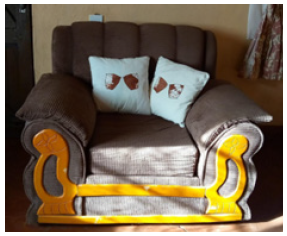
Figure 2:

Figure 3:
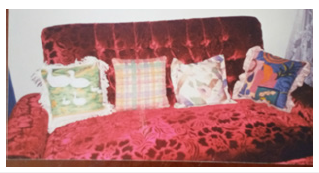
Figure 4:Shoe organizer.

Figure 5:Shoe organizer.
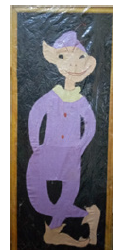
My PhD study (2012) was titled The Indigenous Dress of the Mau Ogiek People, Nessuit Location, Nakuru County, Kenya. The study was oriented toward cultural sustainability and demonstrated the contribution of African ethnic dress to cross-cultural perspectives. The study led me to present extracts at scientific conferences in Nigeria, Kenya, and Uganda as well as publish it in scientific journals. Conference presentations include Functions of ethnic dress of the Mau Ogiek People of Kenya and Gender distinction in the Mau Ogiek People’s indigenous dress, Kenya (Nigeria, 2011), Nonmaterial culture expressed through the Mau Ogiek people’s ethnic dress (Kenya, 2011). In the year 2012, just before graduating with the PhD degree, I chanced on the International Federation of Home Economics (IFHE), Germany. I subscribed to its membership and published a paper in its International Journal for Home Economics (IJHE) titled Functions of ethnic dress of the Mau Ogiek people of Kenya. The paper demonstrated sustainable fashion aspects such as multifunctional and multi-styled dresses, repair, and handme- down. The year 2012 was the beginning of my publishing endeavours in scientific journals namely The creative use of cotton in fashioning the Mau Ogiek people’s Ethnic dress-Kenya in Africa- Dynamics Social Science Research, www.aceser.net. Cotton is an EOL fibre; Universality and diversity of the Mau Ogiek people’s ethnic dress, Kenya, in Journal of Alternative Perspectives in the Social Sciences, www.japss.org; and Forces that occasioned the Mau Ogiek people’s ethnic dress, Kenya in International Journal of Humanities and Social Science, www.ijhssnet.com.
Publishing extracts from my PhD thesis extended into 2013 with Gender distinctions in the Mau Ogiek people’s indigenous dress, Kenya for the International Journal of Education and Research (IJERN), www.ijern.com. Ethnic dress promotes gender equality and equity; and Continuity and discontinuity of the indigenous dress of the Mau Ogiek people, Nessuit location, Nakuru county, Kenya for the International Journal of Art and Art History (IJAAH), www. aripd.org/ijaah. Continuity and discontinuity are not particularly negative; and the application of non-material culture on the Mau Ogiek people’s ethnic dress, Kenya for the Global Journal of Human Social Sciences (GJHSS), www.GlobalJournals.org. Demonstrates cultural sustainability. The GJHSS’ editor was impressed by my publication on Gender distinctions … and invited me to publish with them. In the same year, the IFHE sponsored me to represent it at the 2nd International Workshop on Health Promotion in Kenya, by The Alliance for Health Promotion. Here I learnt about participatory action research (PAR), an approach that is amenable to sustainable fashion studies.
My paper titled Kenya-China Co-operation in the Textile and Clothing Industry through Silk Production and the Resultant Socioeconomic Empowerment of Kenyans (2014) is in the peer-reviewed conference proceedings, www.mku.ac.ke. Silk is an EOL fibre.
At the 2015 Kampala International Design Conference (KIDeC) I presented a paper titled Types and construction of indigenous dressing of the Mau Ogiek people, Kenya, and facilitated a postgraduate seminar on Managing time and academic direction/ focus on a graduate programme. It was my first-time meeting and engaging with designers from around the world and in different specializations. I was amazed, impressed, and inspired by their contribution to design. I learnt about sustainable concepts such as Distributed Renewable Energy (DRE), biomimicry, and co-creation. I started building my network in the community of designers. In the same year, I met a sports scientist at a conference in Addis Ababa, Ethiopia who observed that active sportswear for persons living with disabilities (PLWD) is ill-fitting, unsightly, and uncomfortable. He challenged me to design adaptive active sportswear. That inspired me to submit a research proposal for methodological work on adaptive apparel for persons living with disabilities. Unfortunately, the reviewer used abusive language rather than critiquing the proposal. The review was disheartening, but I held on to the concept, and later conducted research and published it. The special group of consumers is under-served, neglected, and marginalized by among others fashion design practitioners and educators in their collections, teaching, and research.
Come 2016, I received an invitation from Prof. Mugendi M’Rithaa- a fellow facilitator in KIDeC postgraduate colloquium, to present a paper at the Sustainable Energy for all by Design Conference, in Cape Town, South Africa. I read extensively on sustainability and sustainable fashion, conducted research, and presented a paper on the Incorporation of sustainability into fashion design degree programmes in Kenya, available at www. lenses.polimi.it. Demonstration of how academia has a critical role to play in teaching and imparting sustainability concepts to both undergraduate and postgraduate students. I also joined the Learning Network on Sustainability (LeNS), www.lenses.polimi. it. The conference offered another opportunity to engage with designers from around the globe and built up my network. I took baby steps in the sustainable fashion safari.
On curriculum, in the year 2017, inspired by new-found knowledge of sustainability, I revised the Diploma and Bachelor of Science in Fashion Design and Marketing at Machakos University, Kenya, incorporated a unit on Sustainable and Ethical Fashion Design. I pioneered its delivery as studio-based, as well as inducted the diploma tutors. The undergraduate students’ projects comprised transformable, upcycled, multi-styled, and reversible apparel among others. All the creations relate to sustainable fashion.
One, Prof. Richie Moalosi- a co-facilitator at KIDeC’s postgraduate colloquium, was impressed by my paper and invited me to join him and his colleague Dr. Yaone Rapitsanyane to conduct research. We presented a conference paper titled, Sustainable Product Service Systems: A new approach to sustainable fashion at LeNS World Distributed Conference: Designing Sustainability for All, Cape Town, South Africa (2019). From the same research, we published a book chapter on Challenges facing the fashion industry in implementing sustainable product service systems in Botswana and Kenya, In Gwilt A, Payne A, Ruthschilling EA (Editors), Global perspectives on sustainable fashion, Bloomsbury Visual Arts (2019). From the study, I learnt about Sustainable Product Service Systems (S.PSS), a sustainability concept applied to diverse design fields. To my surprise, I discovered among the book’s contributors was a renowned author, Prof. Susan Kaiser, whose book The social psychology of clothing: Symbolic appearances in context (2nd edn revised), I have used for teaching at the University. At the same LeNS conference, Prof. Mugendi and I presented a paper about Fashion design-related doctoral studies in selected Kenyan Universities: Advancing applied research in sustainability and human-centred approaches. The concepts are aligned with sustainable fashion. The conference proceedings are available at http://www.lensconference3.org. The conference offered another great opportunity to have stimulating engagement with designers who are committed to advancing Design for Sustainability (DfS).
The safari has faced a few challenges, especially a lack of funding for grant proposals. I put together two consortia in the year 2020 comprising African scholars and applied for funding for Empowering persons living with disabilities and specialized apparel for women breast cancer survivors. However, none was funded. The projects aimed to enhance socio-economic inclusion of special needs persons.
Then came a surprise invitation from Profs. Miguel A Gardetti and Subramanian S Muthu (editors focused on sustainable textiles and fashion) had read our book chapter in Bloomsbury Visual Arts. I took up the challenge, conducted research, and submitted a paper titled Junior Sportspersons Living with Physical Disabilities’ [Dis]Satisfaction Level with Selected Active Sportswear Attributes: Implications for Sustainable Apparel Design for Social Inclusion in Kenya. Initially, the paper was not accepted by the reviewers for lack of a rigorous scientific approach. I took the feedback positively, beefed up the paper and it was subsequently published in Sustainable Design in Textiles and Fashion, Springer Nature Singapore Pte Ltd (2021), https://doi.org/10.1007/978-981-16- 2466-7. Sustainable fashion promotes the social inclusion of all end-users, including PLWD.
Figure 6:

While teaching and scholarship, I also practice, by designing and constructing apparel, fashion accessories, and soft furnishings anchored on sustainability. Specifically, a cape made from the popular Masaai shuka- cultural sustainability. The inspiration was Africans’ cloaks/capes which are common in diverse ethnic dresses (Figure 6-8). Other creations comprise, a laptop bag made from used bedlinen (Figure 9)- upcycling, a shopping bag from waste Masaai shuka- upcycling (Figure 10), a dress from leso/khanga- a 100% cotton cloth indigenous to the Swahili people (Figure 11), a fabric that was too stiff to construct apparel so instead of discarding it, constructed a pair of curtains (Figure 12), and reversible duvétupcycling (Figure 13).
Figure 7:
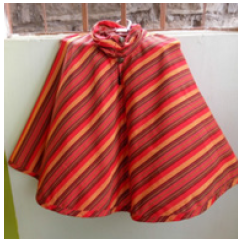
Figure 8:
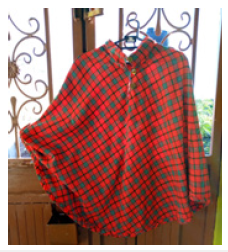
Figure 9:Laptop bag made from used bedlinen.

Figure 10:pcycling, a shopping bag from waste Masaai shuka..
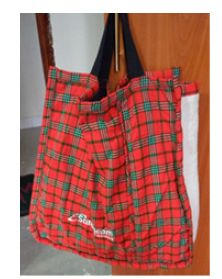
Figure 11:Dress from leso/khanga- a 100% cotton cloth.
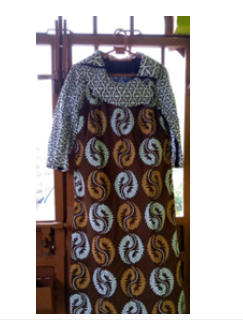
Figure 12:

Figure 13:

As soon as I joined Kirinyaga University in 2021, I was tasked to revise the BSc and develop a new MSc Fashion design and textile technology degree program. For both programs, my proposal for incorporating a sustainable fashion unit was disregarded. However, in every studio-based unit that I teach, I stress students to co-design with real end-users and create good quality products. I also encourage them to purchase second-hand fabrics for their projects to cut costs. The initiatives are anchored on sustainable fashion. Teaching resumed during the pandemic via online delivery. In June-September 2021 and March-June 2022, I taught the unit Fashion design for special groups. This unit has been predominantly delivered as a theory. Nonetheless, I took a studiobased approach incorporating co-design and Design Thinking. The students collaborated with real end-users: special needs persons and those exposed to occupational hazards to design and construct specialized apparel and functional/work clothes. The outcome was highly beneficial to both the students and the endusers. The positive outcome was shared in a paper titled Fashionabled special-needs groups: Implications of co-creation for fashion design undergraduate degree pedagogy and sustainability, in the University of Nairobi’s 4th Annual International Conference on Research and Innovation in Education (AICRIE), (2022), Kenya. One conference participant complimented me on the presentation, via email. I am tweaking the paper for submission to the Co-Design: International Journal of the Arts and Design. Co-creation leads to near-perfect fit and attachment to fashion products, thus enhancing longevity/durability and delayed discarding. In late 2021, during the pandemic, Prof. Moalosi invited me to submit a book chapter for Indigenous Technology Knowledge Systems - Decolonizing the Technology Education Curriculum, Springer Nature Singapore Pte Ltd, edited by Prof. Mishack Gumbo and John Williams. My paper discusses the Nexus of Indigenous Technological Knowledge Systems and Design Education in Afrika’s Higher Education Institutions. The book tackles issues of sustainability and is slated for issue in 2023.
The year 2022 saw an upsurge in scholarship after the lull occasioned by the COVID-19 pandemic. Early in the year, Prof. Moalosi invited me to join the International Upcycling Research Network hosted by De Montfort University (UK) and the University of Botswana, with global membership. A series of seminars were held between June 2022 and January 2023. Prof. Moalosi and I presented a paper about Kenyan fashion designers’ knowledge, attitude, and practice of upcycling. On upcycling. Kenya fashion practitioners are knowledgeable, have a positive attitude, and practice it. I accepted an invitation from one of the members, Elizabeth Burton to collaborate in a workshop for textile colouration using shibori a Japanese resist dyeing technique. The project also incorporates upcycling and shall involve undergraduate fashion design students. To my surprise and awe Prof. Rebecca Earley, whose publications I have cited, is a member of the network. Prof. Moalosi also invited me to join a team of African designers to contribute a chapter to a book he is editing with Dr. Yaone Rapitsenyane. The book’s title is African Industrial Design Practice: Perspectives on Ubuntu Philosophy by Routledge: Taylor & Francis Group. Together with Ms Nani Setlhatlhanyo and Mr. Polokano Sekonopo we conducted research and submitted our chapter on The business case of design in Afrika. Ubuntu is an African philosophy aligned with sustainability. In June, Prof. John Williams shared with me the call for the 11th Biennial International Design and Technologies Teaching and Research Conference (DATTArc), Southern Cross University, Australia.
I took it up and presented a paper on Antecedents to the nonadoption of Fashion Design for Sustainability (FDfS) and applied research by Master’s theses, focused on Kenya. The paper was well-received for its contribution to postgraduate research and sustainability and it is due for publication soon in conference proceedings. In the same year Prof. Sabu Thomas, Vice Chancellor, of Mahatma Gandhi University, India requested to be an invited speaker at their International Online Conference on Reuse, Recycling, Upcycling, Sustainable Waste Management, and Circular Economy (ICRSC – 2022). He was highly impressed with my publications. My presentation was about Situating fashion design actors at the core of Design for Sustainability (DfS) discourse. The paper highlighted the hits and gaps concerning sustainability among fashion actors: academia, practitioners, government, and community, and proposed a way forward to enhance their participation. I also accepted a request to chair one session during the conference. Acting on Prof. Thomas’ request to invite other scholars, particularly from Africa, to present at the conference, I invited two, but only Prof. Moalosi responded. He gave an inspiring plenary presentation detailing the International Upcycling Research Network project and encouraged conference participants to join.
The IFHE annually celebrates World Home Economics Day on 21st March. This year’s theme is Waste Reduction Literacy. I shared the celebration with the undergraduate fashion design students, and we agreed to construct fashion products aligned with the theme and textile waste. We shall curate a fashion show and exhibition before the celebration.
Currently, I am supervising three PhD candidates who are engaged in different sustainability concepts: Upcycling for artworks; Apparel collection for plus-size millennial women; and social entrepreneurship and community development. Plus-size women have continually been neglected by fashion design practitioners, educators, and researchers leading to unsustainable apparel consumption. Presently, I am awaiting notification of my abstract titled Mainstreaming sustainable fashion in technical and vocational education and training curriculum for persons living with disabilities in Kenya, submitted to Harvey Mudd College’s workshop slated for June 2023. More recently, I accepted a request by Dr. Ryna Cilliers, Cape Peninsula University of Technology (CPUT), South Africa to examine a Master of Technology (M.Tech) thesis investigating PLWDs and apparel. The issues are aligned to my research interests and sustainable fashion.
Conclusion
My sustainable fashion safari has its fair share of hits and misses. The former outweighs the latter. The safari involves pedagogy, research, publishing, and conference/seminar presentations. The safari is a learning curve about sustainability theories, models, research methods, collaboration, pedagogy, and grant writing among others. I have learnt the art of collaborative research. So far the safari has been fulfilling to see fashion design students comprehending and incorporating sustainability principles and ethos in their projects. Through pedagogy, I endeavour to create a pool of future fashion design professionals who are responsive and empathetic. Further, I am open to more engagements and collaborations.
References
- Campos AQ, Rech SR (2010) The future of the present: Why & how of research trends. Multi Journal 3(1): 35-47.
- Sgro D (2012) Biomimicry and fashion practice, pp. 61-70.
- Vezzoli C, Conti GM, Macrì L, Motta M (2022) Designing sustainable clothing systems: The design for environmentally sustainable textile clothes and its Product-Service Systems. FrancoAngeli s.r.l, Milan, Italy.
- Mehta S (2018) Design at the doorstep: Design approaches for MSMEs. National Institute of Design, Ahmedabad, India.
- Johnson E, Plepys A (2021) Product-service systems and sustainability: Analysing the environmental impacts of rental clothing. Sustainability 13(4): 2118.
- Craft Alliance (2012) Fashion and sustainability: Design for change [Flyer] (2012).
- Gardetti MA (2019) Independent fashion design in Argentina. Is “Sustainable washing” a concern”? In: Gwilt A, Payne A, Rṻthschilling EA (Eds.), Global perspectives on sustainable fashion, Bloomsbury Visual Arts, London, pp. 28-40.
- Yang Y, Lupo E (2019) Design-driven strategy for the sustainable textile heritage community in China. In: proceedings of the 3rd LeNS World Distributed Conference, Designing sustainability for all, Milano, Mexico City, Beijing, Bangalore, Curitiba, Cape Town, 3-5 April 2019, M. Ambrosio & C. Vezzoli. (Eds), 3: 994-999.
- Raike A, Botero A, Dean P, Iltanen Tähkävuori S, Jacobson S, et al. (2009) Promoting design for all in Finland experiences of successful collaboration of users and designers at the University of Art and Design Helsinki. Design For All Institute of India, 4(9): 61-94.
- Wegener C (2016) Upcycling. In: Glaveanu VP, Tanggaard L, Wegener C (Eds.), Creativity-A New vocabulary. Palgrave Studies in Creativity and Culture. Palgrave Mav Millan, London.
- Rapitsenyane Y, Njeru S, Moalosi R (2019) Challenges facing the fashion industry in implementing sustainable product-service systems in Botswana and Kenya. In: Gwilt A, Payne A, Ruthschilling EA (Eds.), Global perspectives on sustainable fashion, Bloomsbury Visual Arts, London, pp. 236-245.
© 2023 Sophia N Njeru. This is an open access article distributed under the terms of the Creative Commons Attribution License , which permits unrestricted use, distribution, and build upon your work non-commercially.
 a Creative Commons Attribution 4.0 International License. Based on a work at www.crimsonpublishers.com.
Best viewed in
a Creative Commons Attribution 4.0 International License. Based on a work at www.crimsonpublishers.com.
Best viewed in 







.jpg)






























 Editorial Board Registrations
Editorial Board Registrations Submit your Article
Submit your Article Refer a Friend
Refer a Friend Advertise With Us
Advertise With Us
.jpg)






.jpg)














.bmp)
.jpg)
.png)
.jpg)










.jpg)






.png)

.png)



.png)






